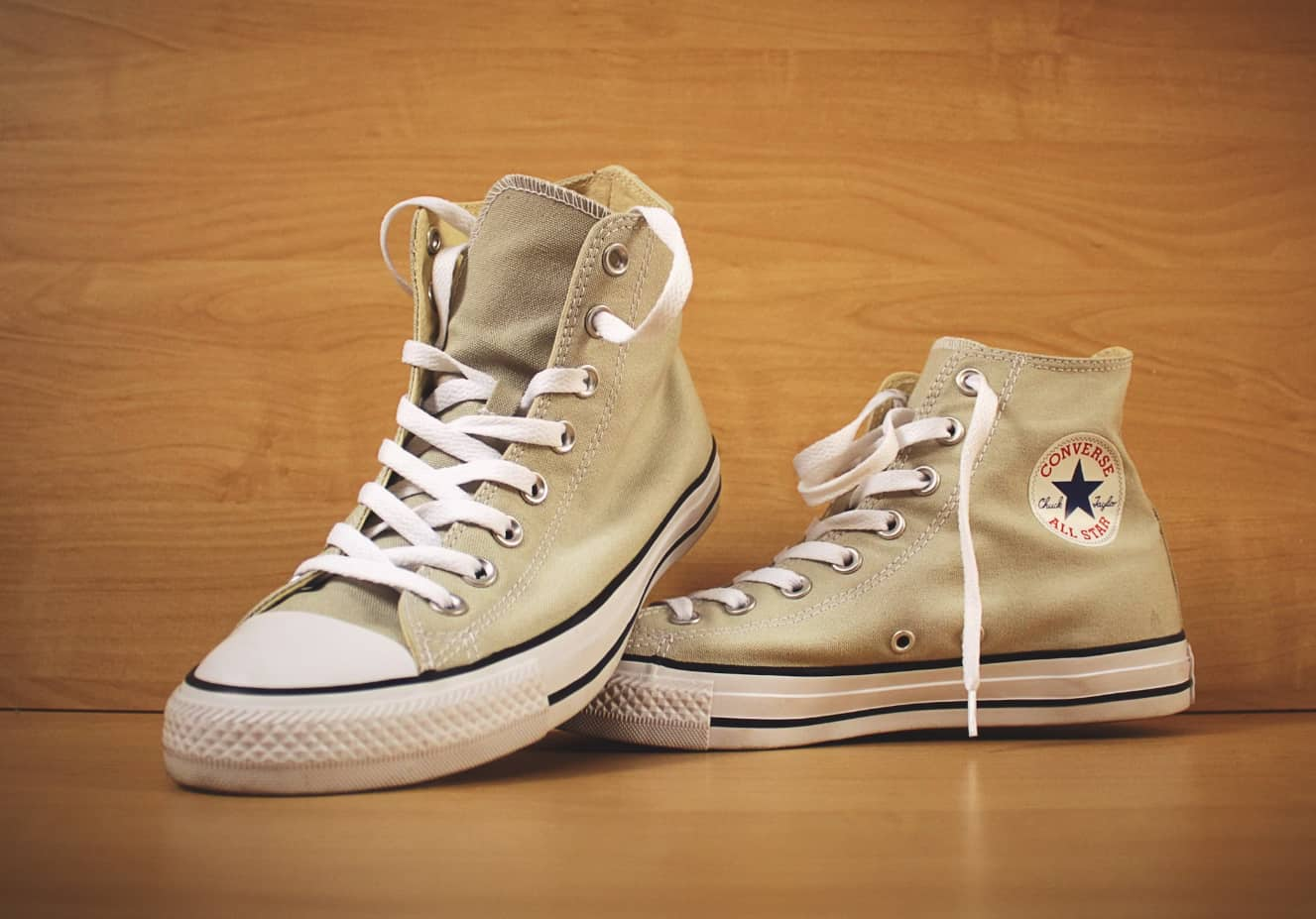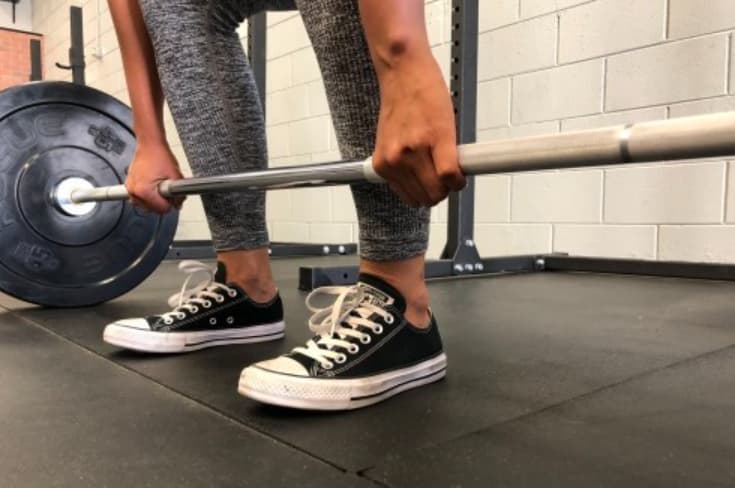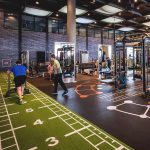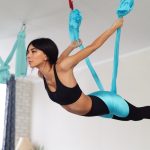Are you a fitness buff who loves hitting the gym regularly? If so, you’ve probably seen many people sporting Converse shoes while lifting weights.
These classic sneakers have been a popular choice among athletes for decades.
But are they suitable for weightlifting?
In this article, we’ll take an in-depth look at the pros and cons of using Converse for lifting to help you decide if they’re the right fit for your workout needs.
Are Converse Good for Lifting in Gyms?

The Short Answer:
Yes, Converse shoes can be a decent option for lifting weights, especially for beginners and intermediate lifters. The flat soles provide stability and support during weight training exercises.
However, they may not be the absolute best choice for serious lifters and professional athletes who need more specialized footwear.
Why Do People Like Lifting in Converse?
So what makes Converse so popular at the gym?
Let’s break down some of the key reasons:
- Flat, Stable Soles: One of the biggest advantages of Converse is its flat, non-compressive rubber soles. Unlike cushiony running shoes, the flat soles of Converse provide a stable base for lifting. This allows you to feel more connected to the ground and maintain proper form during exercises like squats and deadlifts.
- Improved Body Awareness: The minimal cushioning of Converse also enhances proprioception, or your body’s ability to sense its position and movements. With less material between your feet and the floor, you can better feel the ground and make small adjustments to your technique as needed. This improved body awareness can help you lift more efficiently and safely.
- Increased Power Transfer: When you’re lifting heavy weights, you want as much of your energy as possible to transfer from your body to the barbell or dumbbells. Squishy, cushioned soles can absorb some of this force. But with Converse, there’s minimal cushioning to interfere with power transfer, allowing you to exert force against the ground more directly.
- Versatile and Affordable: Another perk of Converse is that they’re versatile enough to wear both in and out of the gym. Just like Tungsten Rings are a great choice for jewelry lovers who want a ring that can keep up with their busy lives, Converse shoes are a great choice for any fitness enthusiast who wants footwear that can keep up with their on-the-go lifestyle. You can easily transition from your workout to running errands or meeting up with friends without having to change your shoes. Plus, Converse is relatively affordable compared to specialized lifting shoes, making them a budget-friendly choice for casual lifters.
Drawbacks of Using Converse for Weight Training
While Converse has some benefits for lifting, they also have a few potential drawbacks to consider:
- Less-than-Ideal Stack Height Stack height refers to the distance between the ground and your foot inside the shoe. For some lifters, Converse may feel slightly too thick, especially for deadlifts where you want to be as close to the ground as possible. Specialized lifting shoes or even just socks can get you even closer to the floor.
- Limited Support and Durability Converse are designed more for style than intense athletic performance. They lack the specialized support features of dedicated lifting shoes, such as metatarsal straps, ankle support, and extra reinforcement in high-wear areas. The canvas material may also wear out faster with heavy gym use compared to more durable lifting shoe materials.
- Suboptimal for Other Exercises While Converse work well for lifting, they’re not ideal for other types of exercise you might do at the gym. The flat soles lack cushioning for high-impact activities like running or jumping. And the narrow toe box can feel constricting during dynamic movements. If your workouts involve a lot of cardio or cross-training, you’ll likely want a different pair of shoes for those exercises.
Which Converse Are Best for the Gym?

If you do decide to lift in Converse, the Chuck Taylor All Star High Tops are a popular pick.
The high-top design provides a bit of added ankle support compared to low-top versions. Look for the classic rubber sole Chucks rather than the newer cushioned sole versions.
That said, any Converse with flat soles can work decently for weight training.
Just be aware that shoes with more colorful dye in the canvas may bleed and stain in sweaty gym conditions.
Are Converse Okay for Squats and Deadlifts?
Converse works okay for squats and deadlifts, especially if you prefer more “heel drive” (pushing through your heels) during these lifts rather than staying on your full foot.
However, for very heavy barbell squats and deadlifts, you may find you prefer the increased stability of dedicated squat shoes or deadlift slippers. It’s a matter of personal preference.
Can You Use Converse for CrossFit?
Converse is not the best option for CrossFit workouts that involve a lot of varied, high-impact movements.
While they’re decent for the lifting portions, they lack support and cushioning for box jumps, sprints, rope climbs, and other common CrossFit exercises.
You’ll likely be more comfortable with a pair of cross-training shoes designed to handle an array of dynamic movements.
Look for shoes with good shock absorption, lateral support, and multi-surface traction.
Summary:
Key Takeaways To sum up, here are the key points about using Converse shoes for lifting weights:
- Converse can work reasonably well for lifting, especially for casual gym-goers.
- The flat soles provide stability and enhance power transfer.
- The minimal cushioning improves proprioception and body awareness.
- Downsides include less than optimal stack height and a lack of specialized support features.
- Converse is affordable and stylish for wearing both in and out of the gym.
- High-top Chuck Taylors with non-cushioned soles are the most popular for lifting.
- Converse are okay for squats and deadlifts but may not be ideal for very heavy loads.
- CrossFit and cross-training require more supportive, versatile athletic shoes.
Also Check: 12 Week Fat Loss Gym Workout Plan for Women
Final Thoughts:
At the end of the day, the best shoes for weightlifting are the ones that feel most comfortable and stable to you. Converse can certainly work well for many recreational lifters.
But if you’re a competitive powerlifter or Olympic weightlifter, you may prefer specialized shoes designed to optimize your performance in those specific sports.
And if you participate in a variety of activities at the gym beyond just lifting, cross-training shoes may give you more versatility and support.
As with any new piece of fitness equipment, you may want to try lifting in Converse at lower intensities first before deciding if you like them for your heaviest sets.
No matter what you wear on your feet, remember to prioritize good form and technique above all else.
The right footwear can support a great lifting session, but shoes alone won’t make up for improper movement patterns or ego lifting.
Focus on mastering the fundamentals, progressing steadily, and listening to your body, and you’ll continue making gains in the gym with or without a pair of trusted Chucks.








